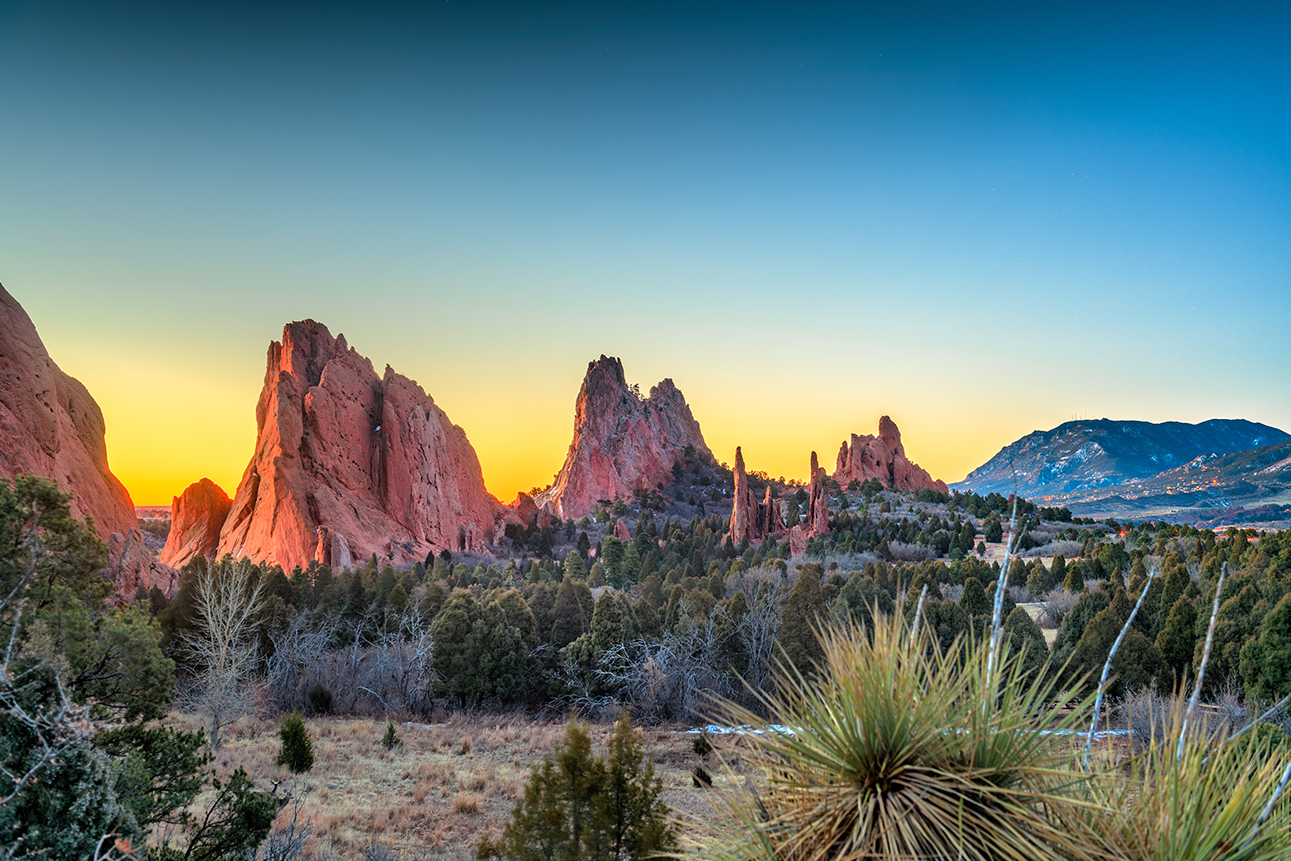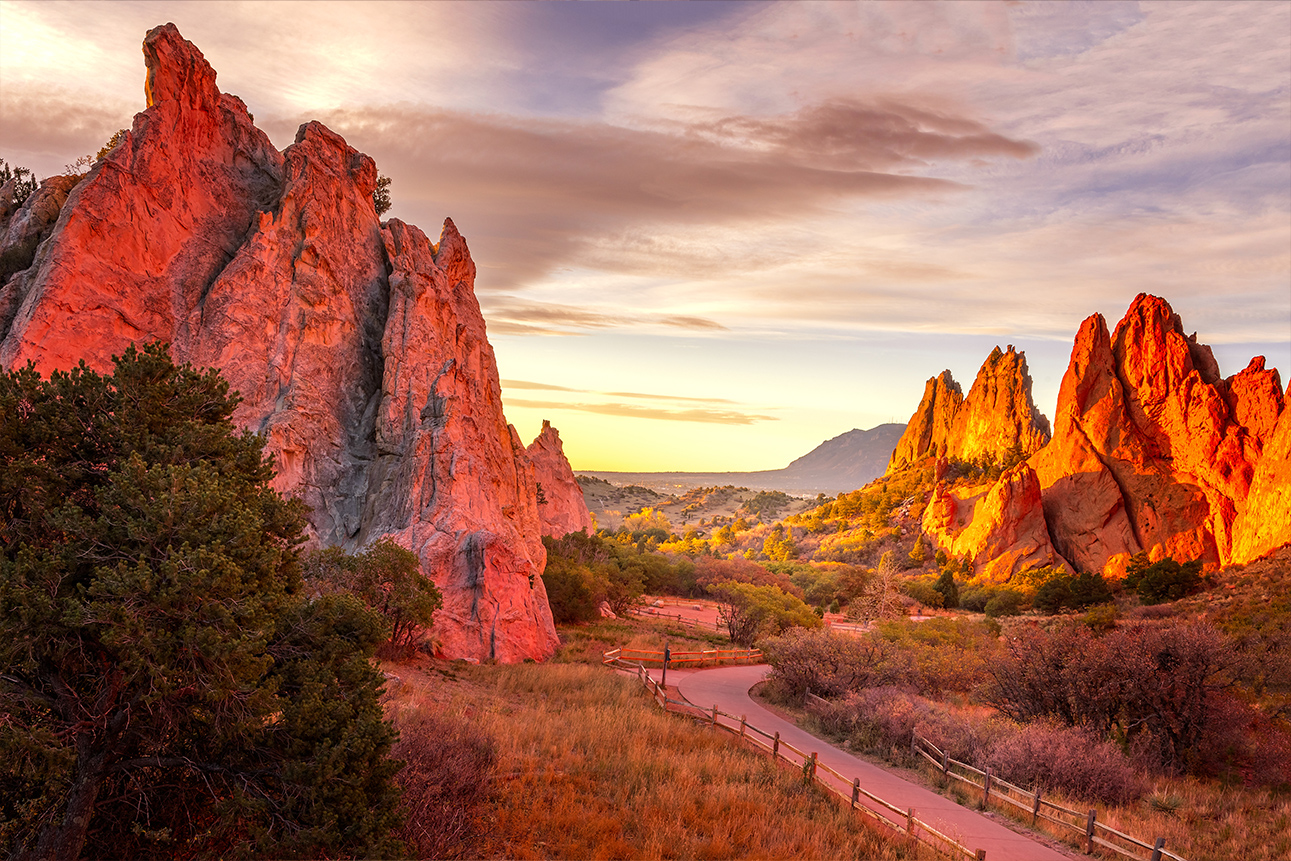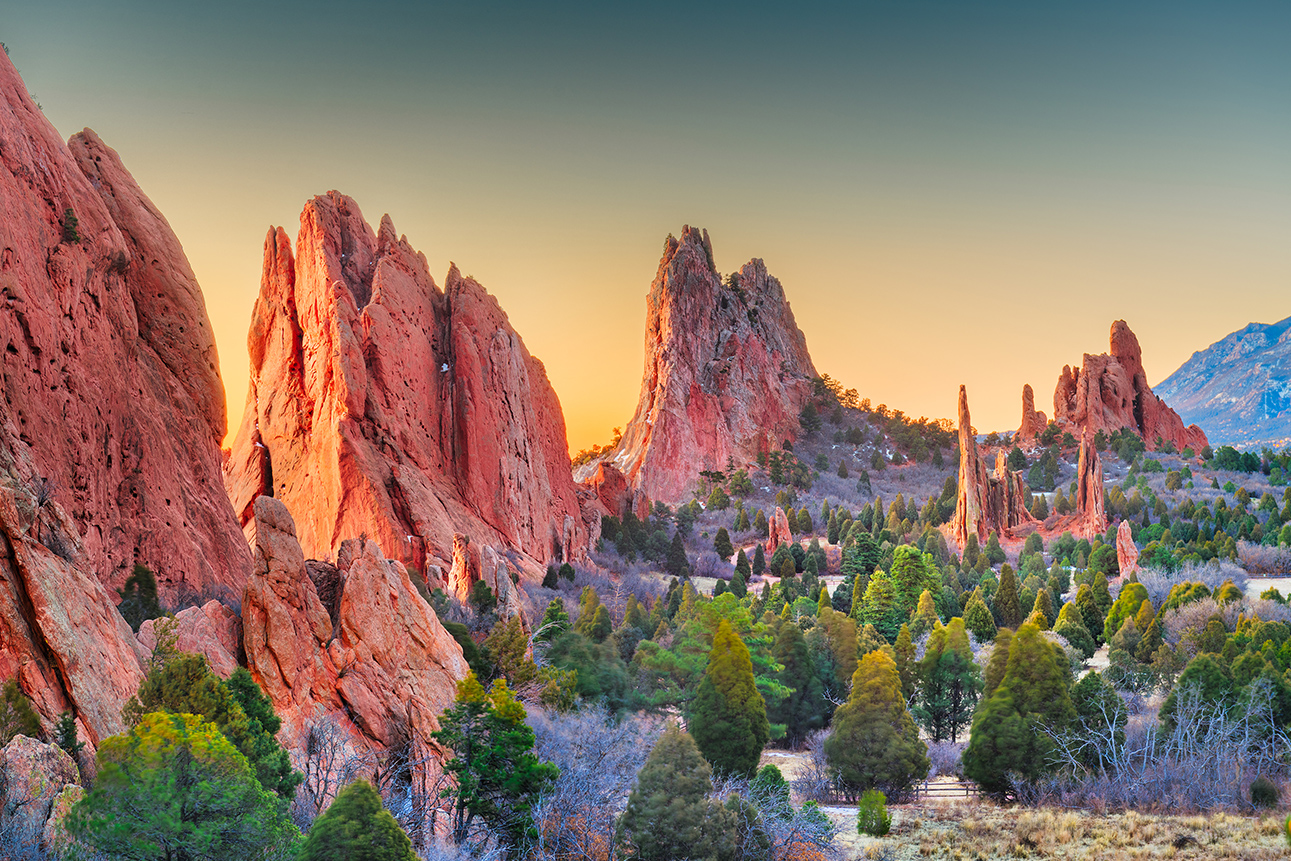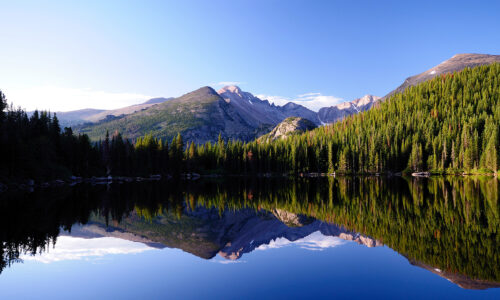About Garden of the Gods
Located near Colorado Springs and Manitou Springs, Garden of the Gods is a 1,323-acre registered National Natural Landmark, featuring dramatic geological formations and stunning views.
The area was once home to the Ancestral Rockies, an ancient mountain range that eroded over time, leaving behind sediment and low hills. During the Pleistocene Ice Age, glaciers and erosion carved the rocks into the sandstone formations that are visible today. Visit the outstanding geologic features of the park, including Steamboat Rock, the Three Graces, and Balanced Rock. These rock formations of deep-red, pink, and white sandstones, conglomerates, and limestone were tilted vertically into “fins” that jut out of the landscape.
The park is thought to have acquired its name in 1859, when two surveyors from Denver City arrived to begin a townsite, which later became Colorado City (now a neighborhood within the city of Colorado Springs). While exploring nearby, they reached this beautiful area of sandstone formations. Surveyor M. S. Beach suggested it would be a “capital place for a Biergarten” when the country grew up. His companion, Rufus Cable, exclaimed, “Biergarten! Why it is a fit place for the Gods to assemble. We will call it the Garden of the Gods.” It has been so named ever since.
The park’s unusual and steep rock formations make it a great place for exploring. Choose to hike some of the 20+ miles of trails, take a guided walk, rock climb, horseback ride, or ride the trails and park roads on mountain bikes or e-bikes. Garden of the Gods is also home to wildlife such as mule deer, bighorn sheep, and foxes, and is one of the best sites in Colorado for observing white-throated swifts, swallows, and canyon wrens.
Interesting Facts About Garden of the Gods
- The skull of a dinosaur was found in Garden of the Gods in 1878. In 2006 it was identified as a unique species, Theiophytalia Kerri.
- A subspecies of honey ant not previously recorded was discovered in 1879 and named after the park. These insects store liquid food in their bellies, used later by their fellow ants when food is scarce. When the liquid food is needed, worker ants stroke the antennae of the honeypot ant, causing it to regurgitate the stored liquid!




